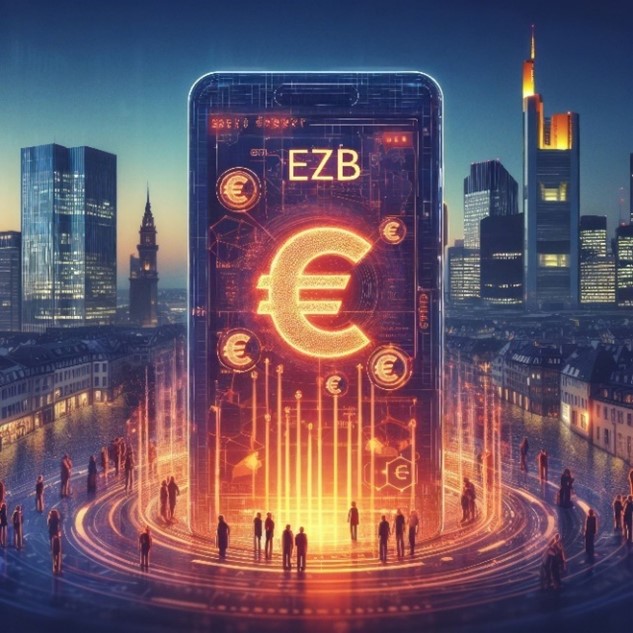The digital euro is more than money
By Alexander Bechtel and Manuel Klein
The ECB’s digital euro project is entering the next round. The success of the project also depends on the ECB’s willingness to use the private sector’s strengths.
In mid-October, the European Central Bank (ECB) launched the next phase of its project to introduce the digital euro. During this so-called preparation phase – which is following the two-year investigation phase – the ECB aims to finalize the rules and regulations for payment processing and develop the technical infrastructure together with selected market participants.
As a result, the debate about the usefulness of a central bank digital currency has picked up speed again. The focus is usually on the role of the digital euro as a new, additional form of money. However, an important aspect of the new digital currency is often neglected: The ECB not only intends to create a new digital monetary unit – a kind of digital cash – but it has already been working on an entirely new payment system for months. The development work is going “front-to-back,” as it is usually called in professional circles: From the provision of a smartphone app, which will serve as the frontend, to the processing of transactions via the backend by the ECB. The digital euro is therefore much more than just a means of payment.
Instead, the digital euro comes with its own ecosystem comprising the ECB and private-sector intermediaries such as payment service providers and banks. In a complex interplay via standardized interfaces, these institutions provide digital wallets and process payments. However, the envisaged division of labor does not appear ideal, as according to the European Commission’s current draft legislation, an app developed and provided by the ECB is to serve as the dominant frontend. In such a scenario, the success of the digital euro would require the European population to change its payment behavior and switch to the ECB app. The experiences made in China show that such an approach has not yet led to success: The digital yuan is already available for end users and comes with its own standalone smartphone app from the People’s Bank of China – the Chinese central bank. However, usage has so far fallen short of expectations and the Chinese population continues to favor applications such as Alipay or WeChat Pay – despite the innovative functionalities of the digital yuan.

The ECB has signaled its willingness to integrate the digital euro also into the frontends of existing payment service providers, such as the payment app Bizum, which is very popular in Spain, or Wero, the future pan-European wallet of the European Payments Initiative (EPI). However, this ambition is not sufficiently reflected in the efforts made so far to develop the rulebook and define the use cases of the digital euro. The ECB plans to prescribe a clearly defined functional scope for frontends, which will limit the possibilities for payment service providers and banks to develop their own solutions. This could result in the digital euro not being able to keep up with the rapid technical developments in the market and already being obsolete when it is launched in a few years. Particularly since the digital euro is to be used over the coming decades, it is essential to allow innovative payment functionalities to emerge through healthy competition between banks and payment service providers.
It is not usually part of a central bank’s role to compete with the private sector for innovative retail payment solutions. Rather, the public-private partnership should be designed in a way that the central bank guarantees the stability of the currency and the settlement system as well as clear rules for the processing of payments, while the private sector develops innovative client-facing products and services.
Against this background, the ECB’s plans to standardize the backend by creating a clear set of rules is welcomed. It could guarantee seamless acceptance and payment processing throughout the euro area based on a European payment infrastructure. A tourist from Barcelona, for example, could then use her favorite Spanish payment app while on vacation in Germany. A dedicated ECB app is not necessary to achieve this. Instead, the ECB should give private financial intermediaries as much freedom as possible to develop new functionalities in their own frontends. That being said, there is nothing that speaks against the ECB developing its own app as well. Especially for payment service providers and banks without an own payment app, such an offering with basic functionalities could be helpful. However, the ECB app should then primarily be a fallback option and not the default option.
In the project to introduce the digital euro, important decisions must be made on the future of the European payment landscape as well as European sovereignty. If the project is to be successful, the digital euro must find adoption and be used as a means of payment. It is therefore important to develop a solution that is not only in the interest of the central bank, but that meets the needs of European citizens. To achieve this goal, the ECB does not have to reinvent the wheel. Instead, it can rely on established and innovative frontends from the private sector while enabling the harmonization of payment processing in the euro area by standardizing the backend. Combining the strengths of the private and public sectors is the prerequisite for creating an attractive product for the European population.
—
This article was originally published in Frankfurter Allgemeine Zeitung (FAZ) in German. For the original version, click here.
Disclaimer: The contents of the article reflect private opinions of the authors and not directly those of Deutsche Bank and DWS.
